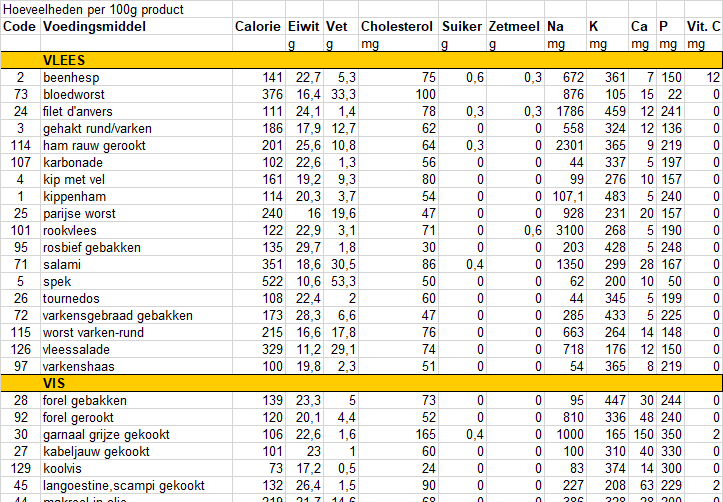I have a table with nutrient data(in Dutch) it looks like this

My DB design skills are very low, I only know Mr. Codd is lurking 'round the corner somwhere.
Could anyone give me some hints on how to set up my tables or should I just usr one table?
Thanks in advance for any answer.
